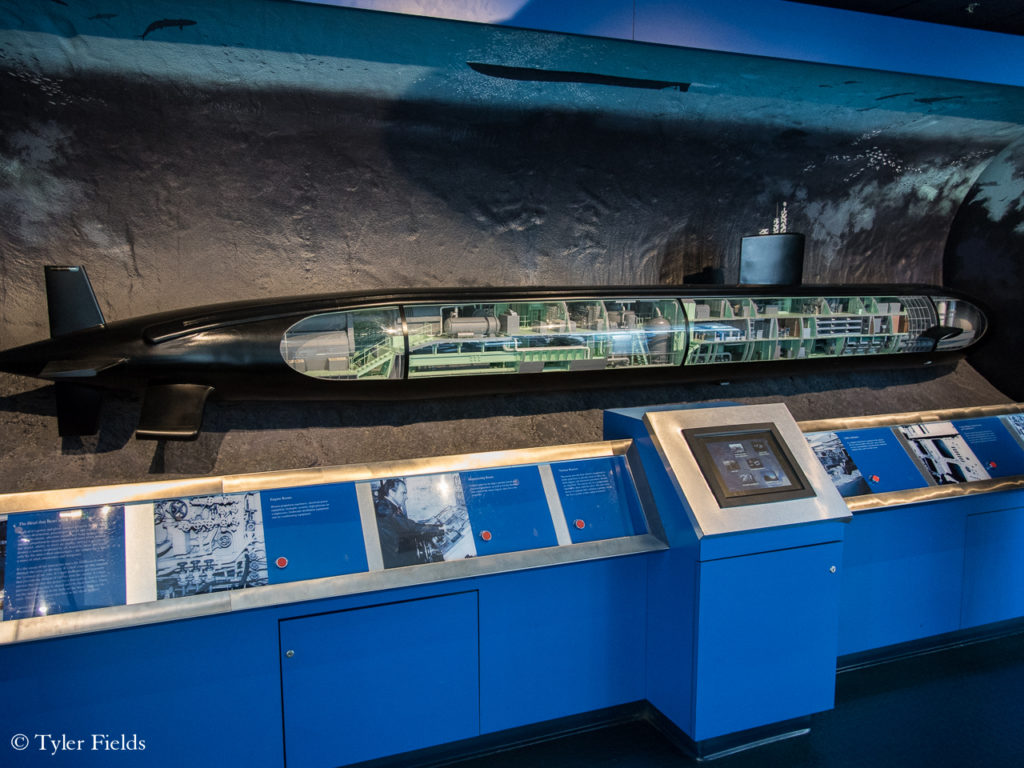
The Maritime Museum of San Diego is now arranging for the vessel’s disposition and bring the tenure of the Foxtrot at our Museum to a close by the end of 2021. We have determined not to shift scarce resources away from the historic vessels in the Maritime Museum of San Diego fleet that we intend to keep in perpetuity, in order to extend the life of the Foxtrot.
#SUBMARINE MUSEUM SKIN#
The B-39 skin visable to you is not part of the vessel’s pressure hull, which remains in good stable condition, so that materially, Foxtrot is no less seaworthy today, than 15 years ago. We are hoping that in the time she remains with us, public health conditions will permit Museum visitors one last chance to tour the Foxtrot sub and step into her own fascinating exotic true story as depicted in the To the Brink of War exhibit and that of the world she represented. A recent severe storm that passed through San Diego, tore away portions of the metal fabric and exposes additional bare metal to rust. You may notice accelerating, degradation of the outer skin of the Russian Foxtrot Class attack submarine B-39. This theatrical professionally produced live action exhibit about a close call with nuclear war the Museum installed on the sub is intended to soon be available live as a web-based experience at. Foxtrot’s popularity among visitors influenced the Museum’s decision to extend the To the Brink of War exhibition, an immersive video, light and sound production shown daily inside the Foxtrot.


Maritime Museum of San Diego originally installed the Foxtrot as an interactive two-year temporary exhibition in 2005. Russian Foxtrot Class attack submarine B-39 closed. They played a part in many of the Cold War’s most tense moments including the Cuban Missile Crisis. The Soviet and then Russian Federation’s navies deployed these submarines from the mid 1950s through the early 1990s. B-39 carried a crew of 78 and could dive to a depth of 985 feet before threatening the integrity of her nickel steel pressure hull. Low-tech but lethal, she carried 24 torpedoes while she was on patrol-some capable of delivering low-yield nuclear warheads. We have the original above water line superstructure of the Oberon Class submarine HMAS OTWAY set within beautiful parkland. Soviet Project 641 submarines, classified as “Foxtrot” by NATO, are essentially larger and more powerful versions of German World War II era U-boats. Now, less than 20 years after the collapse of the Berlin Wall signaled the end of the Cold War, she is berthed on San Diego Bay amidst her former adversaries. B-39, assigned to the Soviet Pacific fleet, undoubtedly stalked many of the U.S. and NATO warships throughout the world’s oceans. 300 feet in length and displacing more than 2000 tons, B-39 is among the largest conventionally powered submarines ever built. She is presently configured to conduct extensively deep water acoustic research, oceanic survey work, sensor trials, and engineering evaluations.One of a fleet of diesel electric submarines the Soviet Navy called “Project 641,” B-39 was commissioned in the early 1970s and served on active duty for more than 20 years. A recent example of this modification for research and development was Dolphin’s test run of the Navy’s newest sonar system. The boat was designed to be easily modified both internally and externally to allow the installation of special military and civilian research and test equipment. Since the boat’s commissioning in 1968, it has amassed a startling record of scientific and military accomplishments. Employed by both Navy and civilian researchers, the submarine is equipped with an extensive and impressive instrumentation suite that can support multiple missions. In August 1969, she launched a torpedo from the deepest depth that one has ever been fired.

In November 1968, she set a depth record for operating submarines that still stands. Rather, it is her unique, extreme deep-diving capability that sets her apart and has continually placed the vessel at the forefront of undersea naval research during her entire career.

The deepest diving submarine in the world, Dolphin is responsible for many “firsts”, but is not primarily associated with any specific historic event or time frame during her nearly forty years of service.


 0 kommentar(er)
0 kommentar(er)
